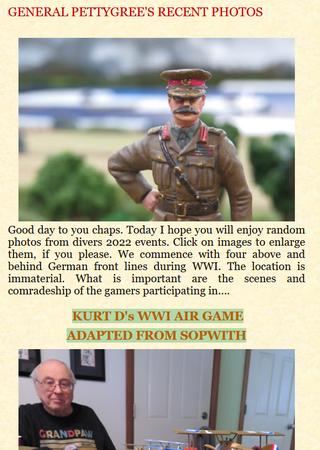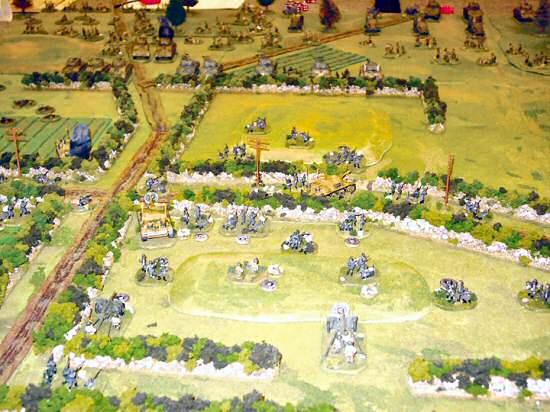
The Marines at Peleliu, 1944 - The Bloodiest Battle of the Pacific War
1 MP3 CD. 12 hours, unabridged. Read by Patrick Lawlor.
What Bill Sloan does here with Brotherhood of Heroes - while acknowledging the contributions of previous books - is to go back once more to the surviving veterans and collect their stories for preservation. That stands out to me as the signal achievement of this book.
He starts by painting in words the moment of the invasion of the Japanese-held island of Peleliu, then takes a long flashback to build the story of the 1st Marine Division - their previous Pacific battles, the integration of new Marines in their ranks, and the irony of their "rest camp" on Pavuvu (which they had to build for themselves, fighting hordes of crabs) as they trained for what was supposed to be a brief four-day campaign.
Then, back to the invasion, the author brings the battle to his readers primarily in terms of how the individual soldiers saw it. This is not the "clean" story of the movement of units on a battle map, but the very tactical recollections of individual Marines as they came ashore, saw their buddies die, pushed on to some hollow or up some ravine, then hang on in small groups waiting for orders or reinforcement. The fighting on the beaches, and particularly the struggle for The Point, makes some of the best portions of this book.
And then, like the real battle, the book goes on and on for weeks... as the Marines take one more ridge only to fall back under counterattack, as they land on Ngesebus (a neighboring island), and as the battle shifts to the cave-busting phase. The author's focus on individual Marines allows him to illustrate the fighting through specific anecdotes, as well as to show progress through the viewpoint of individual fighters.
This book focuses on the Marines at Peleliu, and so there is not much information here on the Japanese forces in defence, the Marine and Navy supporting units, or the Army units which concluded the campaign (the fighting lasted for over two months). There is an interesting mention of what may be the first employment of black Marines in combat - the Marines at this time were segregated, but blacks from a Marine support unit courageously volunteered for combat duty.
While the Peleliu coverage ends with the withdrawal of the Marines as the Army takes over the fighting, the author provides a brief but educational overview of the fate of these Marines later in the War, and on their return to civilian life.
This book, while giving some mention of operational concerns, does not give them much detail. While some commanders are criticized for their tactics, there is not a lot of discussion here about why some tactics didn't work. Objectives are identified for daily attacks, but the reader isn't told how those objectives were chosen. The decision to end the preliminary bombardment early is mentioned as being controversial in hindsight, but that's about all that is said.
There are two exceptions, probably because they are of concern to the surviving veterans. The first question is whether the assault on Peleliu should ever have been carried out. In hindsight, the island could easily have been bypassed. On the other hand, the battle did provide an advance taste of the techniques which the Japanese would use for island defense for the rest of the war.
The second question is why the Marines were left in the fight for so long, when Army troops were on hand (and eventually did finish the campaign). Casualties in some units exceeded sixty percent. The author lays the blame at the feet of Major General William Rupertus, but ultimately cannot answer the 'why' (although he speculates that Rupertus may have been in poor health - he would die before the war was over). He also does his best to explain why the general was not relieved of command, though leaves the reader wondering where it would have been better to ruin one man's career versus the Marine lives that did not need to have been lost.
If you are looking for a book which will allow you to mine its content to create wargame scenarios, this book will not fulfill your needs. (Particularly since the audiobook has no maps - why don't they put them as PDF's on the CD?) However, if you want to read a book that will give you some idea of the grinding combat that went on day after day, and inspire you to do some WWII Pacific wargaming, this could be the one.
The Narrator
Patrick Lawlor's narration is clear and at a slow pace, easy to understand though not in a natural rhythm. He does regional accents when quoting Marines, making it somewhat easier to keep track of whom is whom as the battle unfolds.
A Note on Format
For my previous audiobook, I chose to review the book in normal CD format. For this review, I took advantage of the CD MP3 format - which in this case means that the book comes on a single CD instead of a dozen or so. However, the files are in MP3 format so you'll need the right software or an MP3 player to play the tracks.
I first tried listening to this audiobook via iTunes on my PC, but couldn't figure a way to get the software to play the files consecutively or properly import them. I then switched to Windows Media Player, which worked fine (but is slow to load the list of tracks from the CD).
This audiobook is also available for download at discount from audible.com.
Reviewed by ![]() Editor in Chief Bill
Editor in Chief Bill ![]()
![]() .
.









